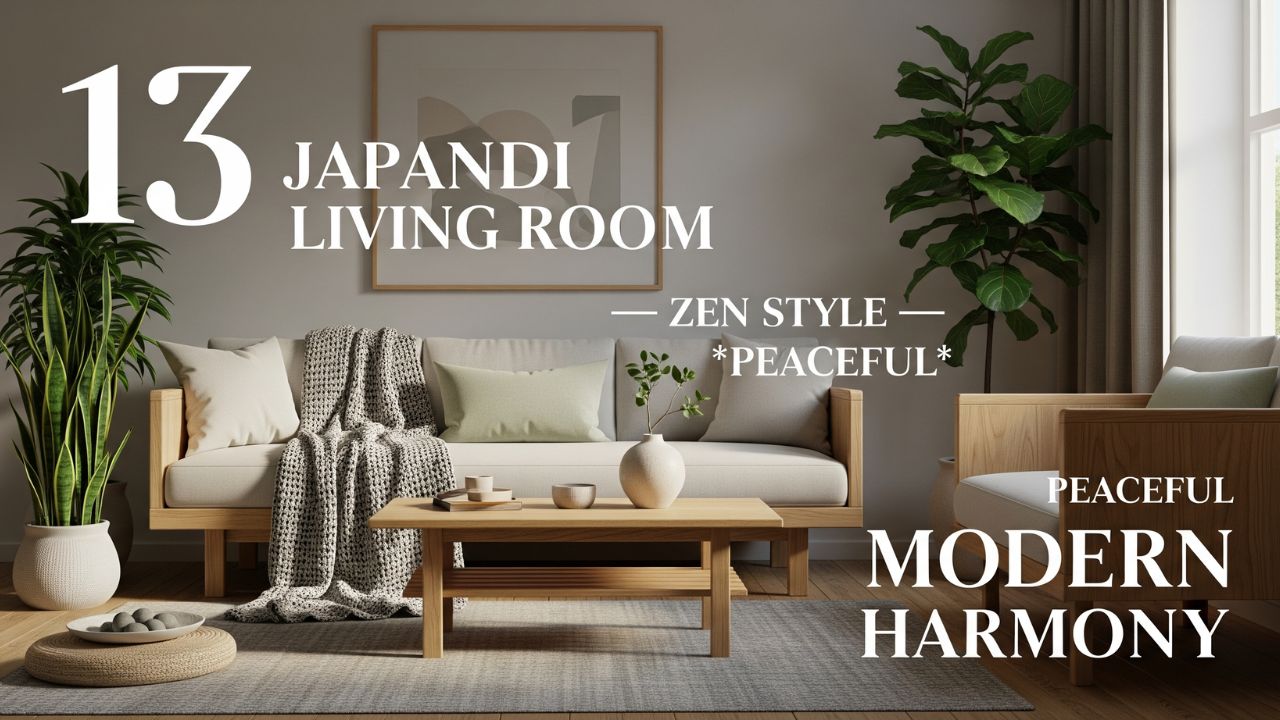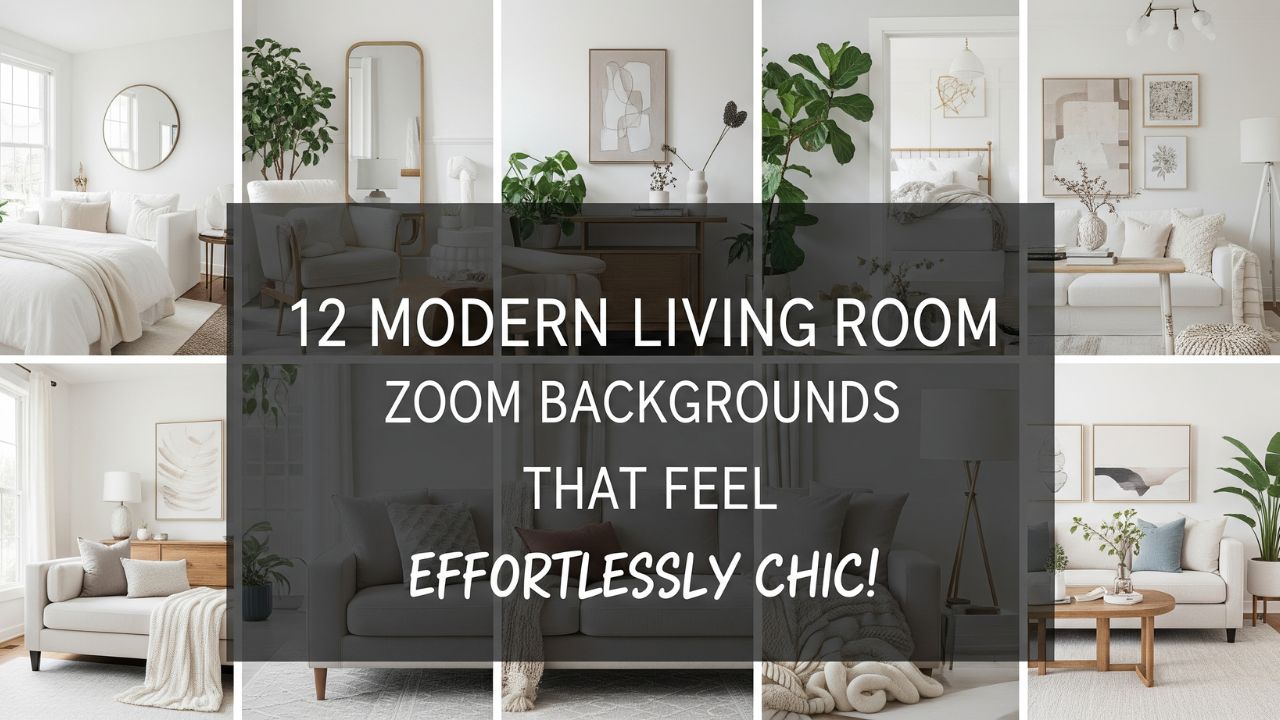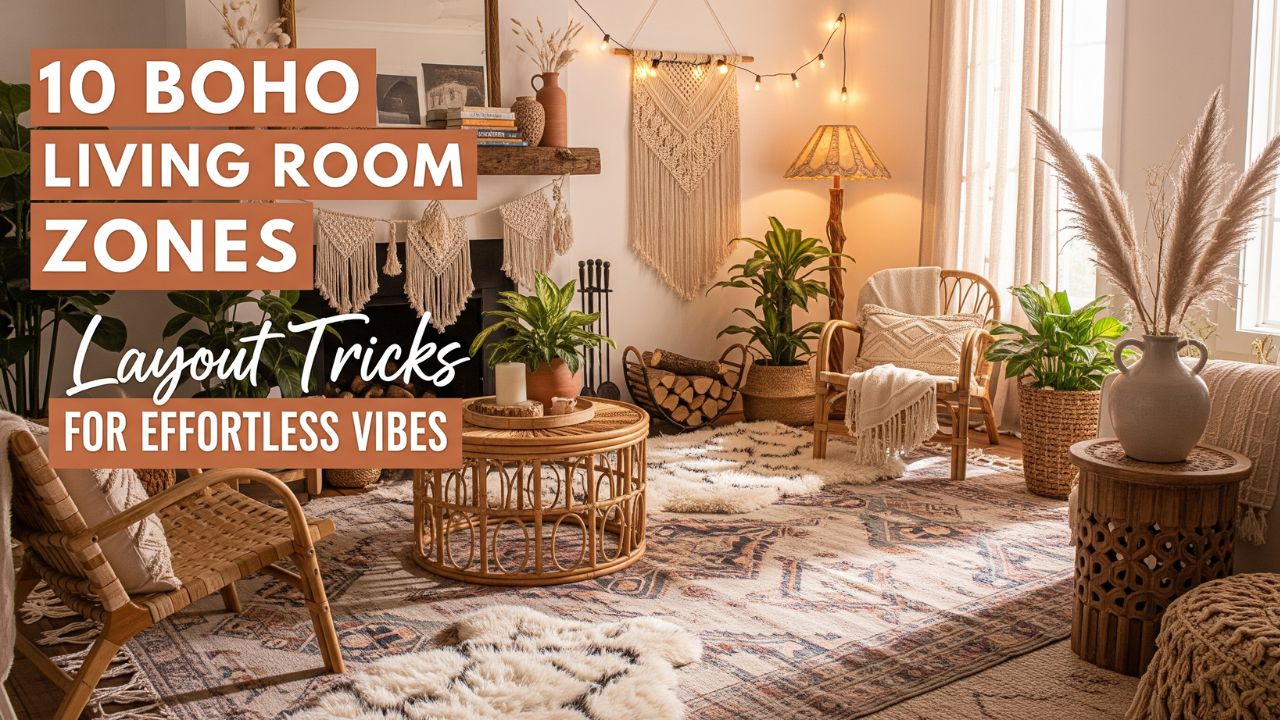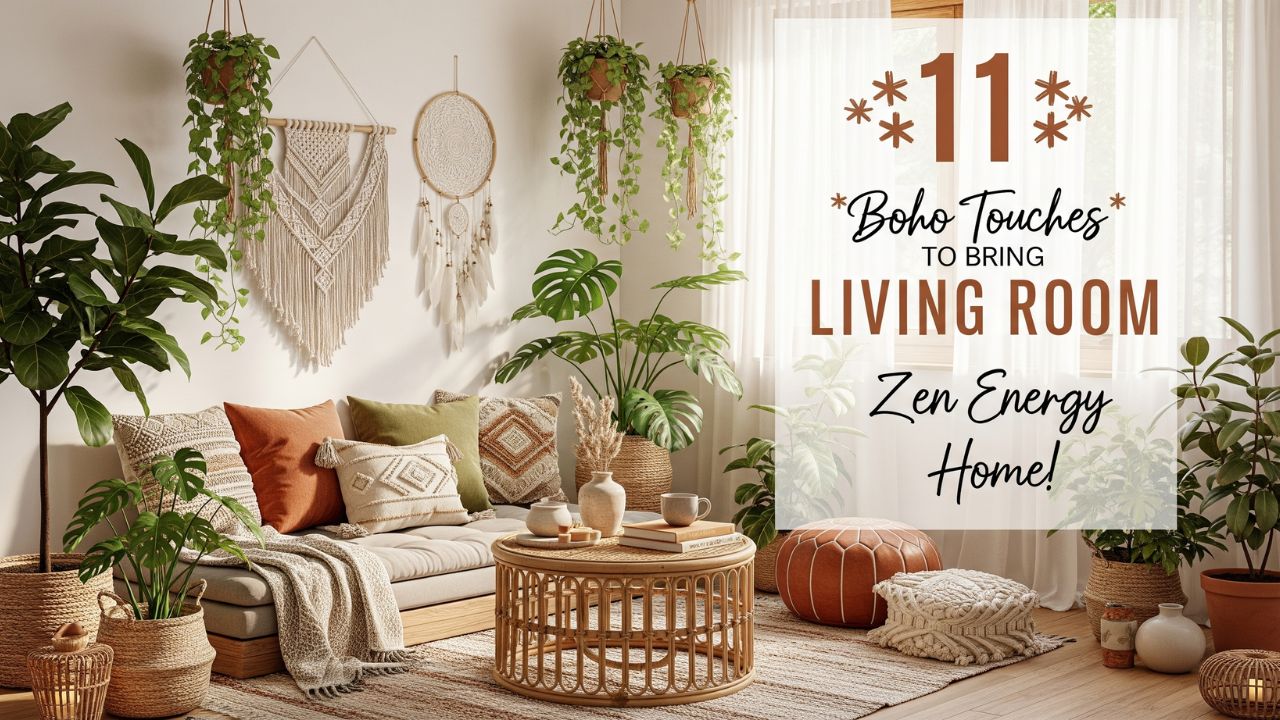In today’s digital age, where screens dominate nearly every aspect of our lives, the idea of a living room with no TV might seem unconventional.
But, what if we told you that embracing a “screen-free” living room could transform your space into a serene, cozy retreat? Imagine stepping into a farmhouse living room that offers not just comfort but also an escape from the overwhelming world of constant notifications, loud commercials, and endless scrolling.
Can a room without a TV truly offer all that and more? Let’s explore the idea behind farmhouse living rooms without televisions, and why opting for a screen-free space might be the best decision for both your home and your well-being.

Table of Contents

10 Farmhouse Living Room No TV Ideas
1. Embracing Simplicity in a Farmhouse Living Room
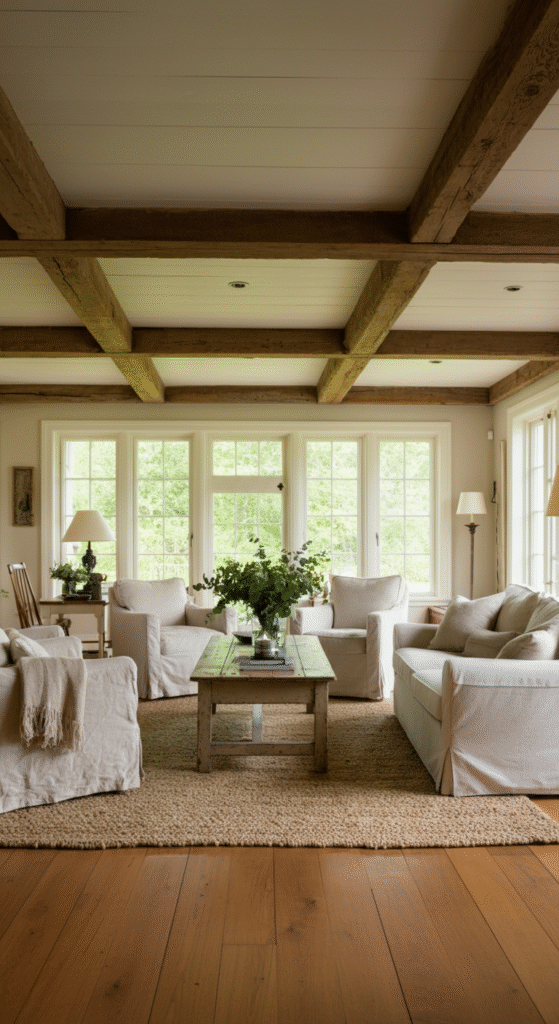
Farmhouse design is all about returning to simplicity and the comfort of the past. The rustic charm, natural elements, and minimalist decor help create a space that feels grounded and peaceful.
When you take out the television from the equation, it forces you to shift your focus from the flashy distractions to what truly matters: your surroundings, your family, and the quality time spent together.
A farmhouse living room, with its cozy furnishings, natural light, and earthy tones, becomes the perfect place to unwind. The absence of a television allows for more interaction, whether it’s enjoying a good book, engaging in deep conversation, or savoring the quiet moments of life.
In fact, studies show that spending time in screen-free spaces promotes better sleep, improved focus, and stronger personal connections.
2. Inviting Conversation and Connection
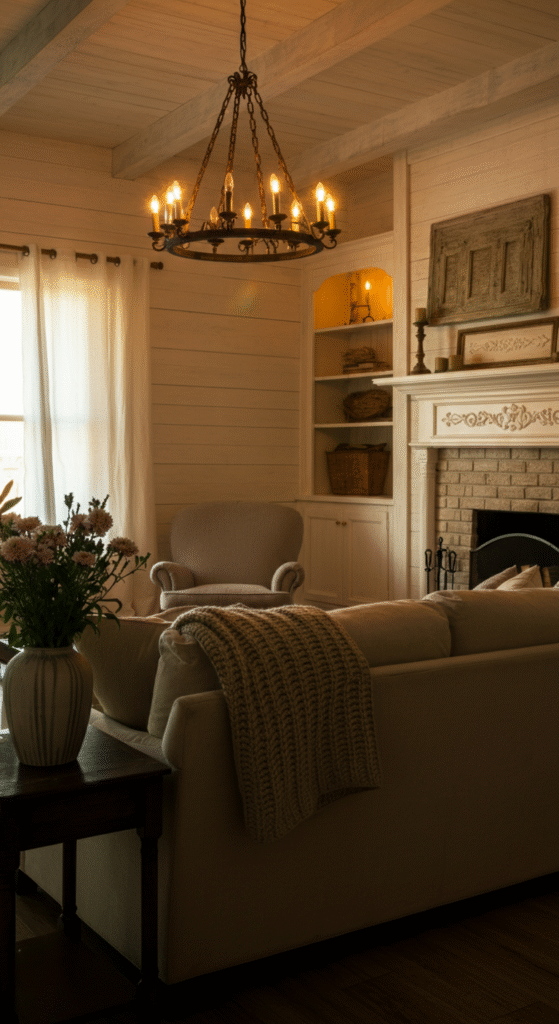
One of the most significant benefits of a living room without a TV is the enhanced opportunity for connection. When the television is off, people naturally engage more in conversations.
Instead of everyone sitting silently in front of a screen, a TV-free room encourages meaningful interactions. It’s the perfect environment for hosting friends, family, or simply spending quality time with loved ones.
Did you know?
Studies show that families who have a TV-free zone are more likely to have higher-quality conversations, leading to stronger relationships. It’s no wonder that many farmhouse living rooms emphasize comfort over technology—creating spaces where meaningful connections can flourish.
3. A Screen-Free Space for Family Fun
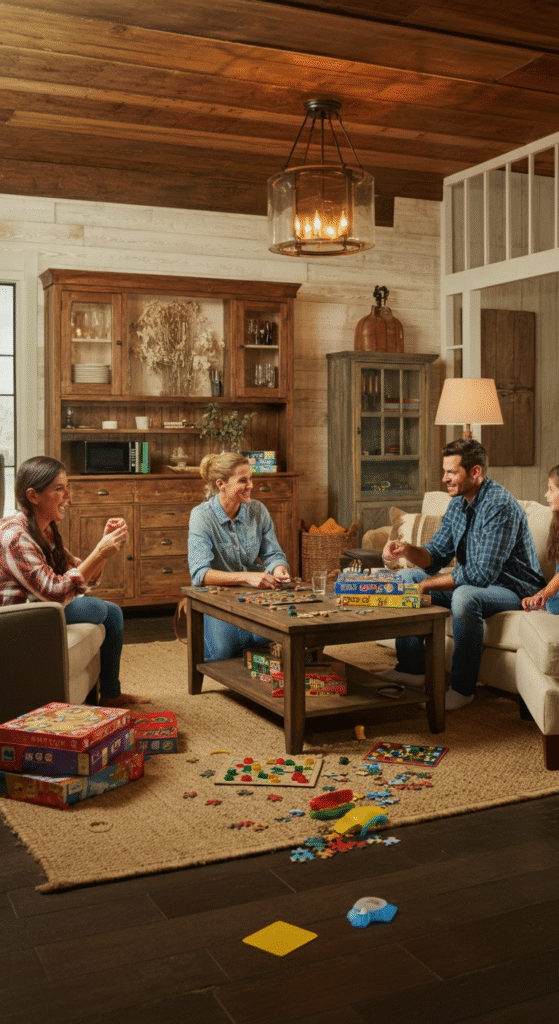
Without a TV, a farmhouse living room becomes a versatile space for various activities. Whether it’s hosting game nights, crafting, or having a cozy reading nook, you can use the room for everything from movie nights with a projector to spontaneous board games with the kids. With no TV to distract, your living room becomes a hub for creativity, bonding, and exploration.
By removing the TV, families are more likely to engage in fun activities that foster creativity and imagination. Instead of passively watching TV shows, the room can inspire interactive moments, such as storytelling, artistic projects, or playing instruments together.
4. How to Style a Farmhouse Living Room Without a TV
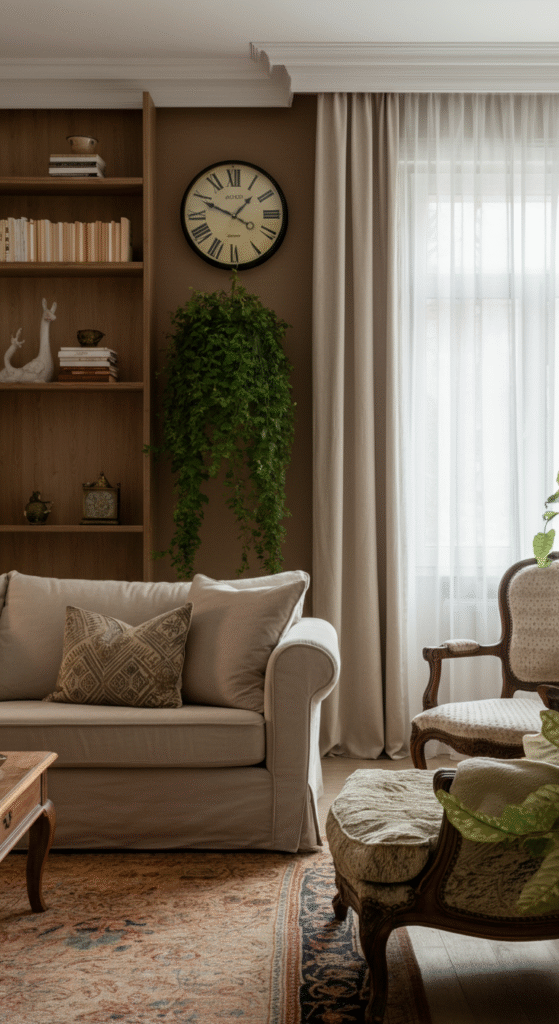
Creating a farmhouse living room that is both cozy and TV-free requires thoughtful design. To achieve the rustic charm and comfort of a farmhouse space, incorporate natural materials such as wood, linen, and cotton into your furniture and decor.
Neutral tones, soft textures, and minimalistic yet functional furniture help bring a sense of calm and tranquility into the room.
Myth-Busting Fact:
Many people believe that a living room without a TV feels incomplete or disconnected. However, in a farmhouse living room, the absence of a screen can be a powerful design choice. The room will feel more open, relaxed, and inviting, and you’ll be surprised by how much room you have for other activities, like reading, socializing, or even enjoying nature views through the windows.
5. Natural Light: A Key Element in Farmhouse Design
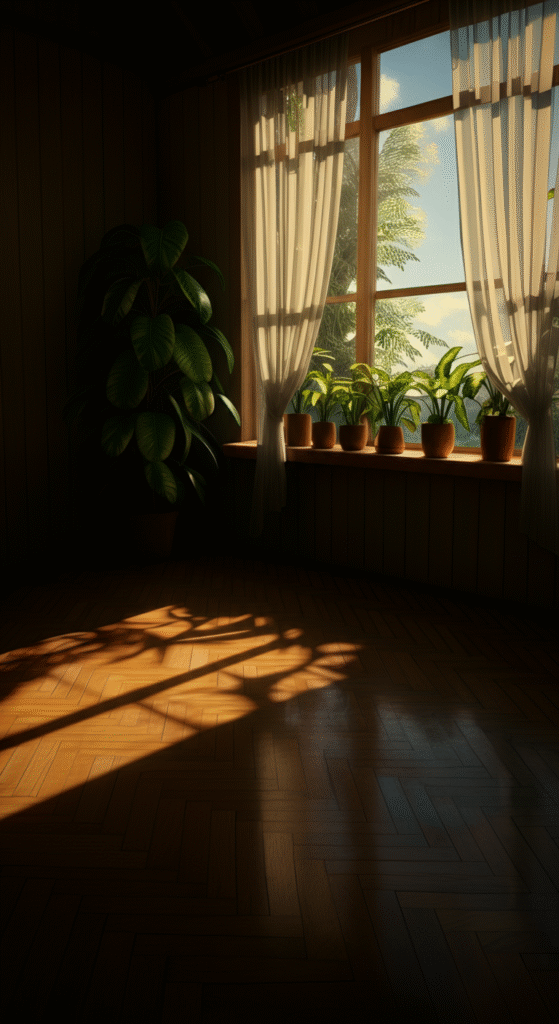
One hallmark of farmhouse design is the abundant use of natural light. Large windows, airy curtains, and open spaces are common features that allow sunlight to flood into the room, making it feel more expansive and connected to the outdoors.
Without the distraction of a television screen, the focus shifts to the beautiful play of light throughout the day, creating an ever-changing atmosphere that enhances the room’s charm.
Did you know?
Exposure to natural light has been shown to improve mood, productivity, and even sleep quality. A farmhouse living room, with its open layout and natural light, can help improve your overall well-being and create a healthier home environment.
6. Creating a Cozy and Inviting Atmosphere
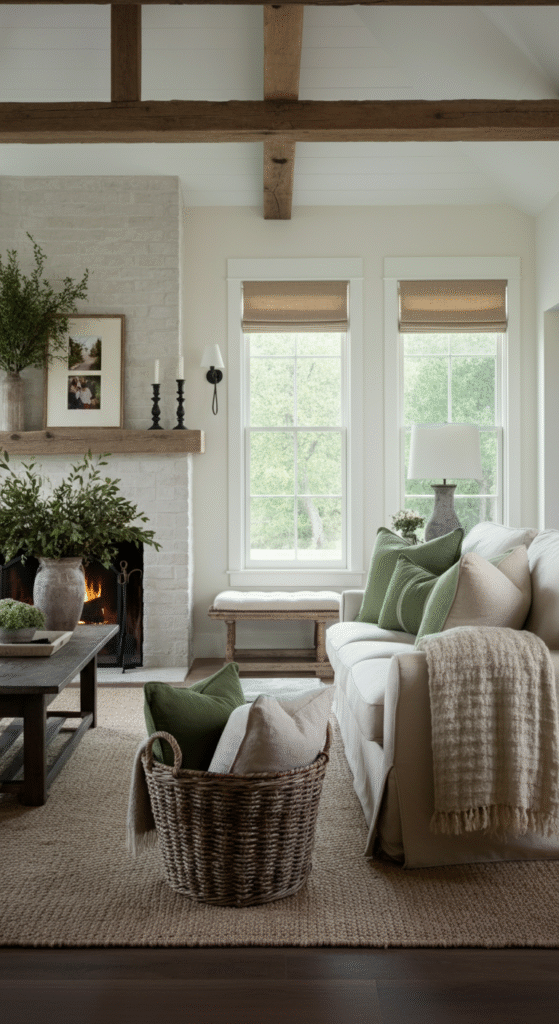
A farmhouse living room is known for its cozy, inviting atmosphere, and without a TV, it becomes even more so. The furniture should be arranged to encourage conversation and interaction.
Large, comfy sofas, warm throws, and textured rugs help add warmth and comfort. Natural elements, such as house plants and wooden furniture, bring the outdoors in, adding to the farmhouse aesthetic.
Fun Fact:
The term “farmhouse” originally referred to homes built on rural estates, designed to withstand harsh weather and provide comfort in isolation. Today, this design style continues to focus on warmth, comfort, and creating an inviting environment that feels like home.
7. TV-Free Space for Mindfulness and Relaxation

Without the constant pull of a television, your living room becomes a haven for relaxation and mindfulness.
The quiet and serene atmosphere provides a peaceful space for activities like meditation, yoga, or simply reflecting on the day. You might find that, without the distraction of a TV, you can finally slow down, clear your mind, and enjoy the present moment.
Did you know?
Mindfulness practices have been shown to reduce stress and improve mental health. A farmhouse living room without a TV can become the perfect setting for these practices, fostering a sense of calm and well-being in your daily life.
8. Incorporating Traditional Farmhouse Features
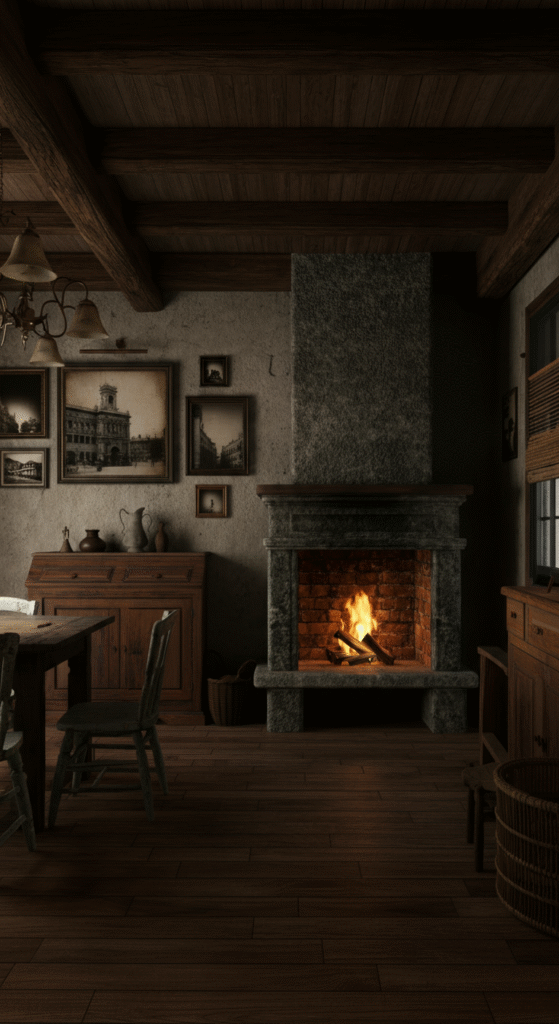
To truly embrace the farmhouse aesthetic, consider incorporating traditional design features. Wooden beams, vintage furniture, and handmade décor add authenticity and character to the space.
These elements not only enhance the look of the room but also promote sustainability and craftsmanship, which are key principles of farmhouse design.
Myth or Fact?
Many people believe that farmhouse style is outdated, but the truth is quite the opposite. With its focus on sustainability and simplicity, farmhouse design is timeless. Its use of natural materials and functional furniture makes it both a stylish and practical choice for modern homes.
9. The Benefits of a TV-Free Lifestyle
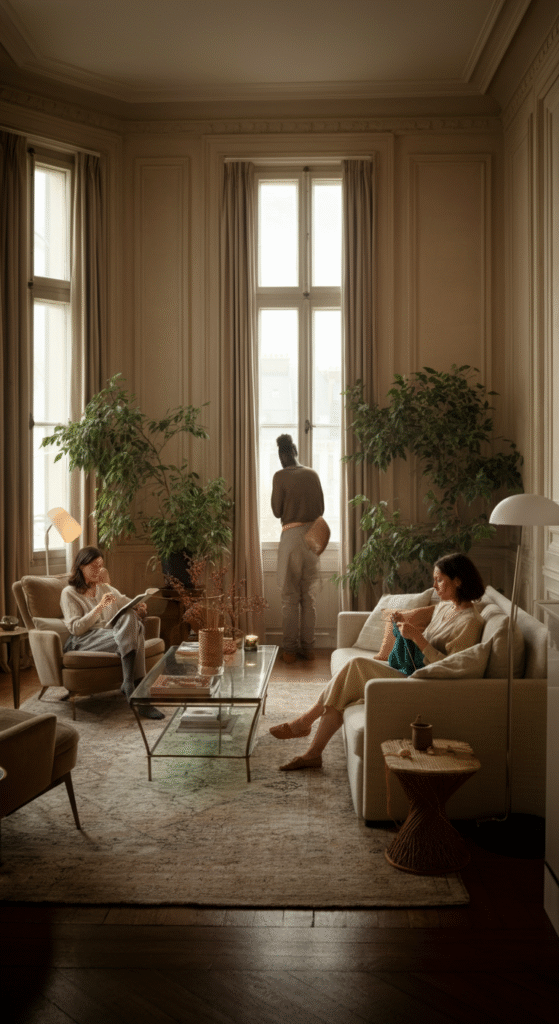
Living without a TV offers numerous benefits that extend beyond just design. For starters, it helps create a more peaceful environment. A screen-free space means less noise, fewer distractions, and a greater focus on what’s important.
Additionally, a TV-free living room encourages more face-to-face interactions, which are essential for maintaining healthy relationships.
Interesting Fact:
The average person spends more than 3 hours a day watching TV. That’s over 1000 hours a year! Removing the TV from your living room could free up that time for other enriching activities, such as reading, cooking, or enjoying hobbies.
10. The Role of Art and Personal Touches in a TV-Free Room
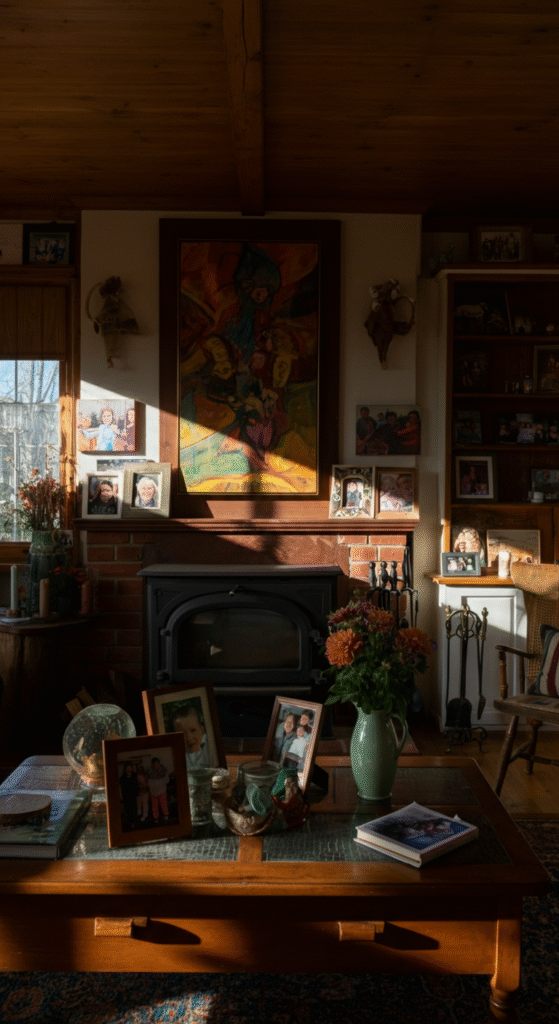
In a farmhouse living room, without the TV as the focal point, artwork and personal touches become essential in creating a meaningful and inviting space.
Family photos, paintings, or handmade crafts can be strategically placed to tell a story and add personality to the room. These elements will make the space feel more lived-in and personalized, creating a greater sense of connection.
Did you know?
Personalizing your space with meaningful objects or art can boost happiness and improve the overall atmosphere of the room. A TV-free living room allows these personal touches to truly shine, making the space feel like an extension of your personality.
Conclusion
Incorporating a TV-free living room into your farmhouse design is not just a trend—it’s a choice to embrace simplicity, connection, and mindfulness.
The absence of a television allows the room to serve as a sanctuary, offering a peaceful retreat from the distractions of modern life.
From fostering stronger relationships to encouraging relaxation and creativity, a farmhouse living room without a TV can transform your home into a cozy, practical, and screen-free haven.
So, next time you’re thinking of redesigning your living space, consider opting for a farmhouse-style room without the TV. Your mind—and your home—will thank you.
Frequently Asked Questions (FAQs)
Why should I consider a farmhouse living room without a TV?
A farmhouse living room without a TV promotes a more relaxed, screen-free environment where you can focus on meaningful interactions, creativity, and mindfulness. It encourages family bonding, reduces distractions, and enhances the overall atmosphere of the room, making it an ideal space for relaxation and connection.
Does a living room without a TV feel incomplete or dull?
Not at all! In fact, a TV-free living room allows you to focus on the elements that make the space feel warm and inviting—like conversation, art, and the natural beauty of the design. A well-decorated, cozy farmhouse living room offers plenty of charm and functionality, even without a TV.
What are some activities I can do in a farmhouse living room without a TV?
Without a TV, your living room becomes a versatile space for activities such as reading, playing board games, crafting, having deep conversations, or even enjoying a home projector for movie nights. You can also use it for mindfulness practices like meditation and yoga.
Is a TV-free living room suitable for families with children?
Yes! A TV-free living room can be an excellent choice for families. It encourages children to engage in creative activities, spend more time interacting with family members, and explore hobbies like drawing, playing instruments, or reading. It also reduces screen time, which can be beneficial for their mental and emotional well-being.
How do I decorate a farmhouse living room without a TV?
Focus on cozy, natural elements like wooden furniture, vintage decor, soft textiles, and plants. Use the space for conversation with comfortable seating arrangements, and incorporate personal touches like family photos and artwork. You can also introduce a statement piece like a fireplace, a bookshelf, or an accent wall to create visual interest.
